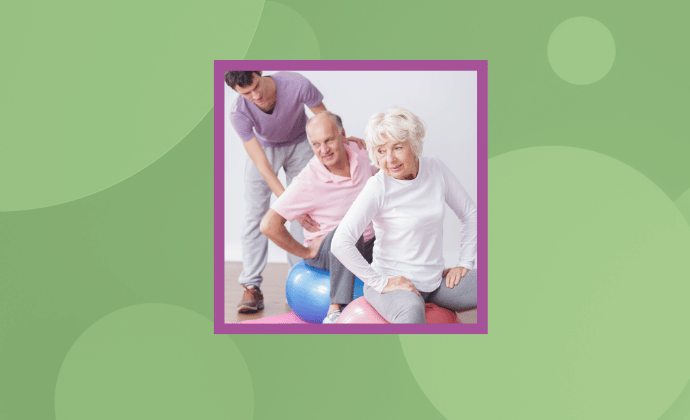You can still reap the benefit of exercise, even with advanced Parkinson’s. If walking or balancing is difficult, use a bar, heavy table, or chair to hold onto when exercising or stretching. If standing or getting up is hard, exercise and stretch in a chair or bed.
There are loads of different seated exercise classes such as general exercise, dance, yoga, and balance. You could also use a recumbent bike (a bike with a low seat and back support) which can help you exert yourself safely.
If none of the suggestions above can help you to do some exercise, here are some more to consider.
You can do facial exercises that can help fight facial masking and speech and/or swallowing difficulties:
- Chew your food longer and more vigorously.
- Exaggerate your face and lip movements when you speak.
- Make faces in the mirror.
- Sing or read out loud. Or join a choir or online singing group.
You can also do mental exercises, give your brain a workout and can improve memory as there is also cognitive decline with Parkinson’s.
For example:
- Name as many animals, vegetables (or colours, or cars) as you can in one minute.
- Play brain games and do puzzles.
- Solve math problems in your head, or try Sudoku or a crossword
Another way to get some exercise is to add an activity in small bits throughout your day:
- Stretch or do leg exercises while watching TV.
- Swing your arms in a multitude of directions each mealtime.
Talk to your neurologist and your primary care provider before starting a new exercise regimen. They can assist you on how intense your exercises can be and recommend exercises appropriate for your individual abilities.
References:
- https://my.clevelandclinic.org/health/articles/9200-exercise-for-people-with-parkinsons-disease#:~:text=You%20should%20begin%20an%20exercise,outcomes%20and%20overall%20well%2Dbeing.
- https://www.hopkinsmedicine.org/health/conditions-and-diseases/parkinsons-disease/fighting-parkinson-disease-with-exercise-and-diet
- https://www.stlukeshealth.org/resources/managing-early-onset-parkinson-s-disease-with-exercise








